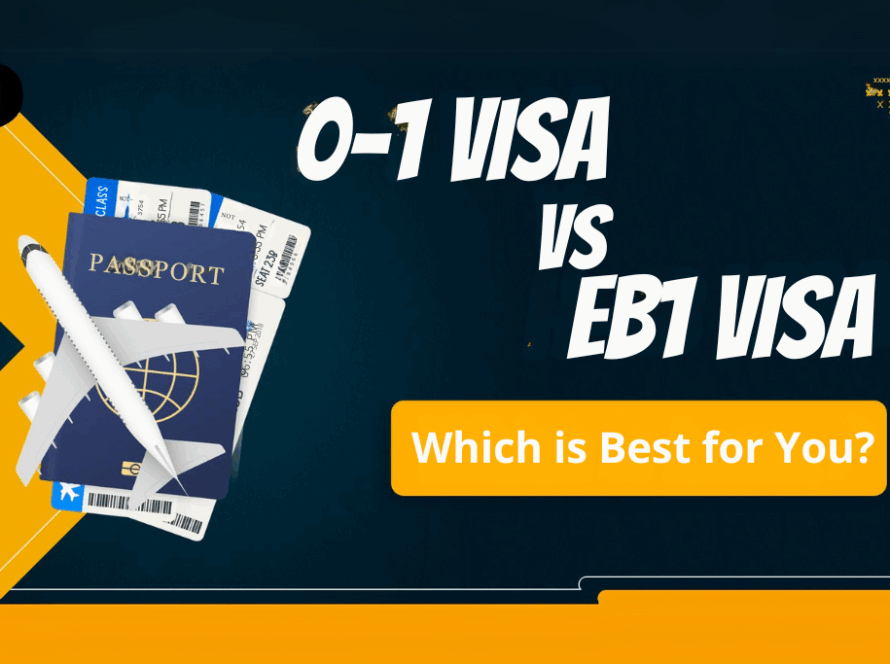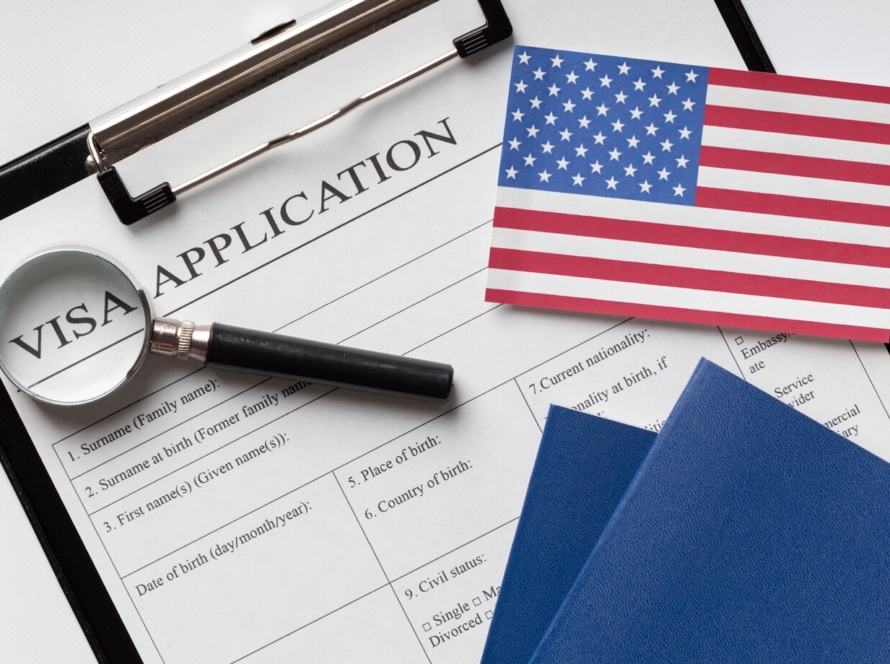Introduction
For entrepreneurs and investors looking to make their mark in the United States, an Investor Visa can be a game-changer. The U.S. offers two primary visa options for those interested in moving to the U.S. by investing in a business: the E2 Treaty Investor Visa and the EB5 Immigrant Investor Program. Both visas allow foreign nationals to live and work in the U.S. based on their investment, but they come with distinct differences in terms of requirements, benefits, and long-term prospects.
Navigating the world of U.S. investor visas can be complex. Which one is right for you? Should you go for the E2 visa, which is faster and has fewer financial requirements, or the EB5 visa, which leads to permanent residency? Understanding the differences between the two can help you make an informed decision that aligns with your business goals and long-term plans in the U.S.
This guide will break down the key differences between the E2 and EB5 visas, including the eligibility criteria, investment amounts, processing times, and more. By the end of this post, you’ll have a clearer idea of which visa is best for your investment ambitions and future in the U.S.
1. What Are Investor Visas?
Investor visas are designed for individuals who want to immigrate to the U.S. by making a significant investment in a U.S. business. They allow investors, as well as their families, to live and work in the U.S. while managing their business ventures. The U.S. has different types of investor visas, and two of the most popular are the E2 Treaty Investor Visa and the EB5 Immigrant Investor Program.
E2 Visa:
The E2 visa is a non-immigrant visa for individuals from countries that have a treaty with the U.S. These individuals must invest a substantial amount of capital in a U.S. business. The visa is generally valid for two years but can be renewed indefinitely as long as the investor continues to meet the visa requirements.
EB5 Visa:
The EB5 visa is an immigrant visa, meaning it grants permanent residency (a green card) to investors and their families. To qualify for the EB5 visa, an investor must make a larger investment in a U.S. business and create a certain number of jobs for U.S. workers. It’s a pathway to U.S. citizenship for qualifying investors.
2. Key Differences Between the E2 and EB5 Visas
While both visas are designed to attract foreign investment to the U.S., they are quite different in terms of eligibility requirements, investment amounts, and long-term benefits.
1. Type of Visa:
- E2 Visa: Non-immigrant visa (temporary). The E2 visa allows you to live and work in the U.S. for a set period, but it does not directly lead to a green card or permanent residency.
- EB5 Visa: Immigrant visa (permanent). The EB5 visa leads to permanent residency (a green card) for you, your spouse, and any qualifying children under the age of 21.
2. Investment Amount:
- E2 Visa: Requires a substantial investment in a U.S. business, but there is no fixed dollar amount. The investment should be enough to develop and direct the enterprise. While it is typically recommended to invest around $100,000 or more, smaller amounts can be acceptable, depending on the nature of the business.
- EB5 Visa: Requires a minimum investment of $1.8 million (as of 2023) in a U.S. business. This amount can be reduced to $900,000 if investing in a Targeted Employment Area (TEA), typically a rural or high-unemployment area.
3. Job Creation Requirements:
- E2 Visa: There is no specific job creation requirement, but the business must be a real and active enterprise that generates enough income to support the investor and their family.
- EB5 Visa: Requires the creation of at least 10 full-time jobs for U.S. workers. This is a strict requirement and a significant part of the approval process.
4. Nationality Requirements:
- E2 Visa: Only available to nationals of countries that have a Treaty of Commerce and Navigation with the U.S. There are over 80 such countries, including countries like the UK, Japan, Germany, and Mexico.
- EB5 Visa: Available to investors from any country, regardless of nationality.
5. Family Members:
- E2 Visa: Allows the investor’s spouse and children under the age of 21 to accompany them to the U.S. The spouse can also apply for work authorization to work in the U.S.
- EB5 Visa: Also allows the investor’s spouse and children under the age of 21 to accompany them. The whole family receives permanent residency (green cards).
3. E2 Visa: Benefits and Drawbacks
Benefits of the E2 Visa:
- Lower Investment Requirement: Compared to the EB5, the E2 visa has a much lower investment requirement.
- Renewable: The E2 visa can be renewed indefinitely, as long as the business remains operational and the visa holder continues to meet the requirements.
- Work Flexibility: The investor can work in their own business and direct its operations.
- Family Benefits: The investor’s spouse can work in the U.S., and children can attend school.
Drawbacks of the E2 Visa:
- Temporary Status: The E2 visa does not lead to a green card or permanent residency.
- Nationality Restrictions: Only available to citizens of countries with a treaty with the U.S.
- Uncertain Long-Term Future: While the visa can be renewed, the investor’s status is not guaranteed, and there is no path to citizenship.
4. EB5 Visa: Benefits and Drawbacks
Benefits of the EB5 Visa:
- Permanent Residency: The EB5 visa provides the investor and their family with permanent residency in the U.S., leading to a green card.
- Pathway to Citizenship: After five years of holding a green card, the investor can apply for U.S. citizenship.
- No Nationality Restrictions: Available to investors from any country, including those that don’t have a treaty with the U.S.
- Job Creation: The EB5 visa promotes economic development in the U.S. by encouraging job creation in a variety of industries.
Drawbacks of the EB5 Visa:
- High Investment Requirements: The minimum investment for an EB5 visa is much higher than the E2 visa, requiring at least $1.8 million, or $900,000 if investing in a TEA.
- Job Creation Requirements: The investor must create at least 10 full-time jobs for U.S. workers, which can be challenging depending on the nature of the investment.
- Long Processing Time: The EB5 visa process can take several years, from the initial application to obtaining a green card.
- Risk of Investment Failure: As with any investment, there’s a risk that the investor’s business may not succeed, potentially affecting the green card status.
5. Which Investor Visa Is Right for You?
Choosing between the E2 and EB5 visa depends on your financial resources, business goals, and long-term plans in the U.S. Here are some considerations to help you decide:
- E2 Visa might be the right choice if:
- You want to invest a lower amount of capital in a business
- You are from a treaty country
- You prefer to maintain flexibility in your stay and renew your visa
- You’re looking for a temporary visa with the option to extend indefinitely
- You are not seeking permanent residency or citizenship in the near future
- You want to invest a lower amount of capital in a business
- EB5 Visa might be the right choice if:
- You have the financial resources to invest $1.8 million or $900,000 in a business
- You want to establish permanent residency and a path to citizenship for you and your family
- You’re looking to make a long-term investment with a focus on job creation
- You are ready for a more structured and formal process with significant benefits
- You have the financial resources to invest $1.8 million or $900,000 in a business
6. The Application Process: What to Expect
E2 Visa Application Process:
- Determine Eligibility: Ensure your country has a treaty with the U.S. and prepare your business plan and investment evidence.
- Submit Form DS-160: Complete the online visa application form.
- Attend the Visa Interview: The U.S. consulate will conduct an interview to assess the viability of your investment and your intentions.
- Wait for Approval: Once approved, you can enter the U.S. and begin your business.
EB5 Visa Application Process:
- Choose Your Investment Option: Either invest in your own business or a regional center.
- File Form I-526: Submit your EB5 petition with all supporting documentation (business plans, financials, etc.).
- Consular Processing or Adjustment of Status: If you’re abroad, attend a U.S. embassy interview. If you’re in the U.S., file Form I-485 to adjust status.
- Conditional Green Card: After approval, receive a two-year conditional green card.
- File I-829 to Remove Conditions: After two years, file for permanent residency.
Conclusion:
Choosing between the E2 and EB5 visas comes down to your investment goals, timeline, and desire for permanent residency in the U.S. Both visas offer unique opportunities for investors, but understanding the nuances of each can help you make the best decision. Whether you’re looking for a temporary business venture or aiming for permanent residency and citizenship, you’ll be on your way to building a brighter future in the U.S. with the right visa.
FAQs
1. Can I switch from an E2 visa to an EB5 visa?
Yes, you can apply for the EB5 visa while on an E2 visa, but you must meet the investment and job creation requirements.
2. Do I have to live in the U.S. after obtaining an E2 visa?
No, you do not have to live in the U.S. full-time, but your investment must remain active, and you must continue to direct your business.
3. How long does the EB5 visa process take?
The EB5 visa process can take anywhere from 18 months to several years, depending on the location and complexity of your case.
4. Can my family come with me on the E2 visa?
Yes, your spouse and children under 21 can join you on the E2 visa. Your spouse can also apply for a work permit.
5. Can I convert my EB5 investment into a different business after obtaining a green card?
Once you have a permanent green card, you have more flexibility in your business dealings, though you must continue to comply with the requirements for job creation and investment.



3 Comments
Ella1400
Good https://is.gd/N1ikS2
Daisy1271
Very good https://is.gd/N1ikS2
Adele3414
Good https://is.gd/N1ikS2